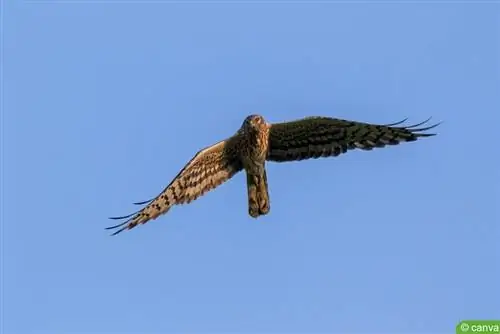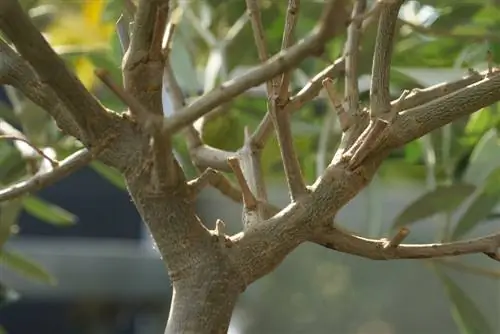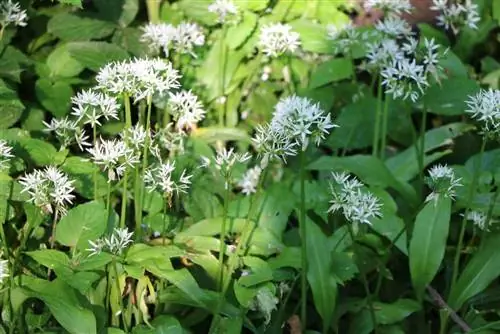- Author admin [email protected].
- Public 2023-12-17 03:39.
- Last modified 2025-01-24 12:45.
Ants, even if not welcome in the gardens and on the terrace, are fascinating insects that form their own colony with queen ants, males and workers. Many species of ants are actually very useful because they ensure balance in the ecosystem. There are around 13,000 species of ants known worldwide. The following article presents the best-known species native to Germany.
Ants in general
In every climate zone there are countless species of ants that have spread here. All species of ants belong to the arthropods and therefore to the insect family. An ant colony can always be divided into three castes, which include the queen ant, the workers and the males. Ants have the following properties:
- Workers are usually wingless
- sexually mature females (later queens) have wings
- the males also have wings
- after mating the males die
- Females lose their wings
- Antennas and biting tools on the mouth
- particularly good sense of smell
Tip:
Flying ants are not a special species but all types of ants can fly at certain times when they mate. Then the later queens swarm out at the same time to find a place for their new nest and their colony.
Leaf cutter ants

Leaf cutter ants are always a very large ant colony once they have found a place. The queen ant of this species gives birth to up to 150 million workers over the course of her life. Around two to three million of them live at any one time. The diet of leaf cutter ants is as follows:
- cut up the leaves of surrounding plants using the mouthparts
- these are chewed into a substrate
- this is how a big sponge is made
- is criss-crossed with many tunnels
- a mushroom grows on this
- the actual food of leaf-cutting ants
Tip:
In contrast to many other species of ants that feed on insects or human food, leaf cutter ants are the vegetarians among ants. It is therefore particularly important if a nest of this ant species is found in the garden to protect the surrounding plants from leaf damage.
Fire ants (Solenopsis spp)
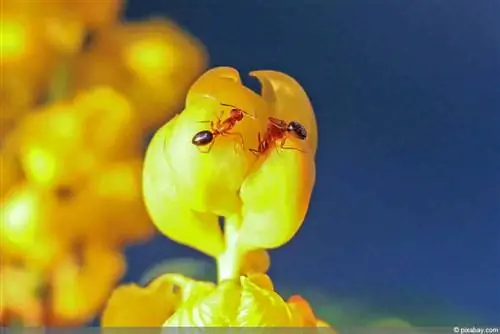
Fire ants are actually not a native species of ants, but they were introduced into the local latitudes through import and are therefore multiplying here more and more. The fire ants have the following properties:
- usually live in open fields or under stones
- usually in the immediate vicinity of other ant colonies
- steal the brood and food supplies from this
- often bivouac nests in open fields
If the fire ants have built a bivouac nest, this can be very fascinating. Because here the workers cling to each other together with the larvae. The ant brood is protected there. In this way, the animals do not need any material to build a nest.
Tip:
If you encounter fire ants, you should give the nest a wide berth. The aggressive animals spray a poison that contains alkaloids that can trigger allergic reactions and even anaphylactic shock. The bite causes burning pain and small pus pimples.
Common lawn ants (Tetramorium caespitum)
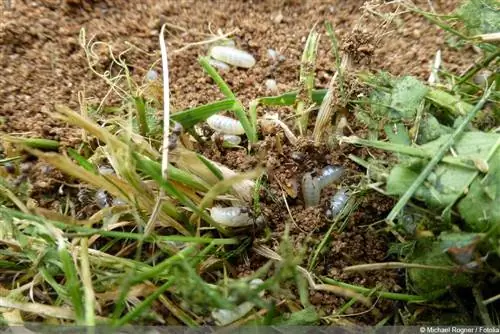
The common lawn ant is very small, up to 6 millimeters long, and is mainly active in spring and summer. The nests are in the ground or under stones. The species is an omnivore and likes to penetrate buildings via wires and electrical cables in search of food. The common lawn ant has the following properties:
- feeds on all human foods
- Pet food of all kinds is also included
- penetrates mainly at night in search of food
- Up to 80,000 workers live in the nest
- Nests are often built near food sources
Tip:
If ants are found in the apartment, in the basement or in a storage room, then the nest cannot be far away. However, since this is located outside the building, the ant trail in the building often cannot be of any help. Therefore, you have to look for the nest outside near the wall under stones or in the ground.
Pharaoh ants (Monomorium pharaonis)
The smallest, but also one of the most dangerous species of ants in this latitude are the pharaoh ants. The animals of this species are only around 4.5 millimeters long, but since they are active all year round, they like to nest in the masonry in the cold months. Buildings with consistent temperatures are preferred. Therefore, the following must be taken into account when it comes to pharaoh ants:
- can easily get into cracks and crevices due to its size
- particularly dangerous in medical facilities
- are considered vectors for highly infectious diseases
- one of the most harmful species in Germany
- is therefore also fought
Pharaoh ants not only like to sit in the cracks of buildings, they also feed on human food. They particularly prefer substances that contain a lot of protein and sugar, but they don't stop at all other foods either.
Tip:
Even though most ant species are protected species and cannot be killed, if there is an infestation of pharaoh ants in your own home, you should act immediately and call in an expert.
Carpenter ants (Camponotus)
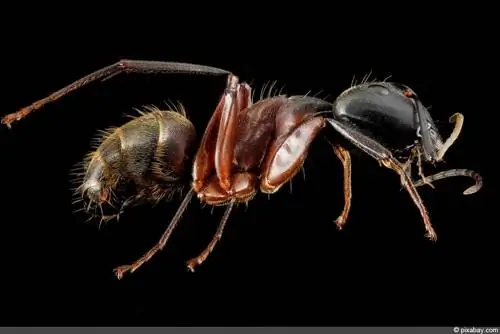
One of the largest varieties are carpenter ants, whose workers can be up to 18 millimeters long. What is unusual about this species is that the males help with brood care. In the other species, the males are only responsible for reproduction and therefore only have a limited life expectancy. Carpenter ants are characterized by the following nest building:
- live mainly in rotten wood
- build nest chamber systems in here
- enter the trunk via the roots
- Nest cannot be seen from outside
- can consist of several trees
- Corridors are connected underground
Red ants (Myrmica rubra)
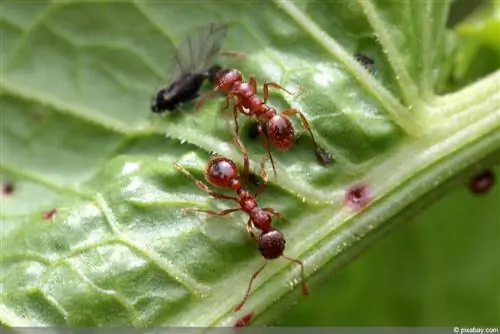
The red ant is also known by the other name red-yellow knot ant. The queens of this species have a special feature in the form of a shiny triangle on their forehead. The ant species has the following properties:
- a nest is shared by up to 15 queens
- this includes another 1000 workers
- Several nests are often put together
- then there will be a super colony
Black-gray ants (Lasius niger)
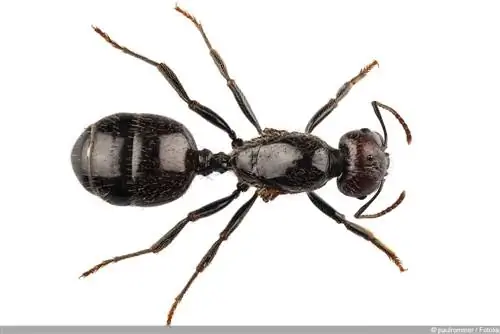
The black-gray garden ant, which is easily recognized because of its very dark color, is not a pest. Because they prefer to build their nests in the ground or under stones. Their diet, on the other hand, is primarily very rich in protein, so they eat the insects that can be found around the nest. Earth nests can be identified by the fine soil surrounding the holes.
Black-headed ants (Tapinoma melanocephalum)
The black-headed ants are easily recognized by their black head and otherwise very pale abdomen. This species of ant also likes to invade human habitats because it primarily prefers sweet foods and fats as food. If it lives outdoors, it feeds on butterfly caterpillars, which have sweet excretions, and honeydew. The black-headed ants prefer the following nest building:
- like on terraces, balconies and in the garden
- here under flower pots, loose stone slabs
- also on trees under loose bark
Since black-headed ants prefer sweet foods, they can also be easily rerouted and relocated. Otherwise, they quickly move from their nest under the flower pot or patio tiles to the richly set outdoor coffee table. The black-headed ants are active all year round because the queen is constantly in the reproductive phase and so the brood has to be fed even in winter.
Tip:
Since black-headed ants are attracted to moisture, they can often be found in the bathroom or under a kitchen counter.
Forest ants (Formica)
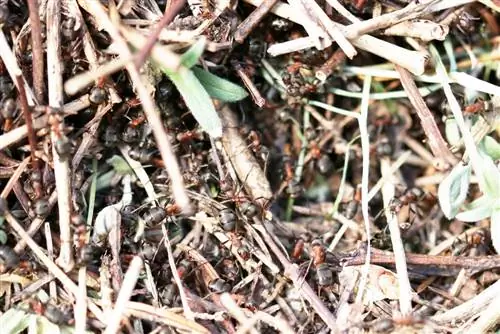
The best-known type of ants in this latitude are the wood ants, which primarily maintain the ecosystem in the forest. They are on the list of endangered animals because more and more of their habitat is being taken away. The wood ants are characterized by the following characteristics:
- eat forest pests
- are also a source of food for other forest dwellers
- can bite if attacked
- defend themselves with formic acid
- Size about one centimeter long
- Ant queen up to 25 years old
- stops egg production in autumn
- Ants overwinter without brood
The wood ants build their nest as a mound with scattered domes. The nests are mainly found on rotten tree stumps, which usually consist of plant parts, soil, resin and wood residues. The nests can reach a circumference of up to five meters.
Tip:
If you spot wood ants in the forest or a clearing, you should avoid taking a break here. Because the bites and the formic acid sprayed with them can be very painful.
Smelling house ants (Tapinoma sessile)

The fragrant house ants also like to stay near people's homes. Because here you will find everything you need for your nutrition. Since the species is also very small, up to 3 millimeters long, it can easily get into the house through cracks and other entry points. Once it has settled in, it lives longer here for the following reasons:
- Ants live for several years
- new ants evolved every forty days
- in a colony up to 10,000 animals
- prefers fruits and sweet foods
- but also all other foods
Indoors, the fragrant house ants can usually be found in the green plants but also under toilet lids, because they love it damp.
Tip:
If a sweet-smelling house ant is crushed, it gives off a scent of coconut, so this species can be easily identified.


